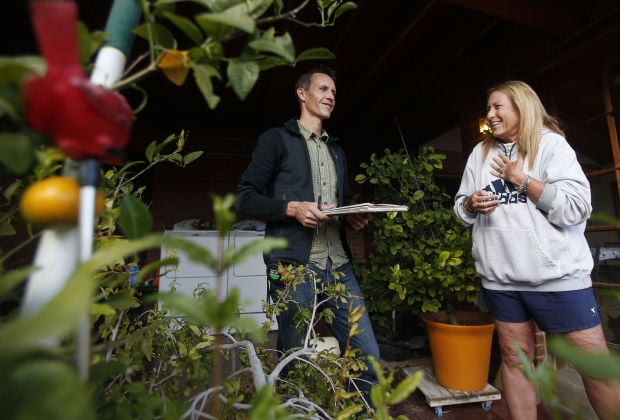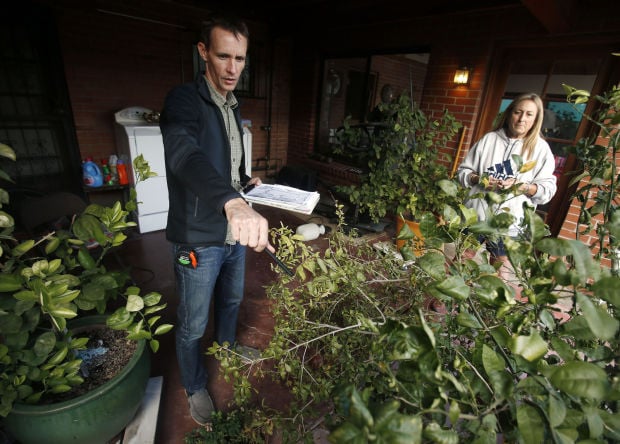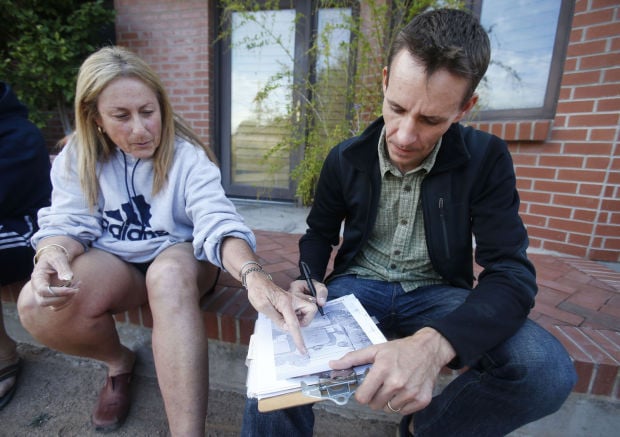Heavy rain floods the midtown street where Ronni and Roland Kotwica live, causing water to lap close to the front door.
“We get inundated with water,” Ronni Kotwica explains. Two years ago they laid sandbags in front of their house and “we actually had water into the sandbags.”
She hopes Catlow Shipek can help solve the flooding problem, caused by water running down the street, while giving ideas on what to do with their bare front yard.
Shipek is co-founder and senior program manager at Watershed Management Group. He leads a team of landscape consultants and designers who help people harvest rainwater.
Watershed Management Group (WMG) is a nonprofit organization that organizes and educates people who then create water-harvesting systems at their homes and in their neighborhoods.
Watershed Management’s nearly 2-year-old consultation service grew out of those cooperative efforts.
“The cooperative programs really focused on getting a project done,” says Shipek. “We were finding that (people) didn’t know where to start. They wanted to take a step back and have a master plan or list of opportunities and then move forward.”
The on-site consultations give homeowners ideas on earthworks and systems for rainwater harvesting and storage that will address their specific situation.
Consultations also include suggestions for gray-water irrigation, appropriate plant selection and food production systems.
“We really focus on the water resources and how to have a productive landscape that is in balance with onsite resources,” says Shipek.
In the case of the Kotwicas, the primary concern was reducing flooding of their front yard while using the rainwater to irrigate plants.
Currently, the yard has a citrus tree and a ruellia growing in the same spot.
The ground is flat and covered in gravel and rock. The yard is surrounded by a block fence, which the Kotwicas recently installed to divert rainwater runoff from the street.
Ronni Kotwica already is familiar with water harvesting because of Watershed Management Group projects for the Palo Verde Neighborhood Association, of which she is president. Because of that, Shipek did not go through his typical explanation of passive earthworks that collect water directly to the ground and active systems of using gutters to guide water from the roof into tanks.
Instead, he focused on how to handle the two types of water flow through the yard.
“Small storms are your irrigation events,” he says. “Big storms you want to get through your landscape.”
Creating basins beyond the fence in the public right-of-way will capture water before it gets into the yard, he told Kotwica. Small trees such as kidneywood or acacia in those basins will get irrigated and won’t grow so tall that they reach the overhead utility wires.
He suggested basins in the front yard, too. That would minimize flooding and the collected water would irrigate the mature mesquite and palo brea, also known as Sonoran palo verde, that the Kotwicas want to plant.
Dirt from those basins can be used to raise the grade of the ground along the house, guiding water away from the foundation and into the basins.
He recommended a tank to collect water from the front part of the roof. A hose from the tank would lead to the citrus tree, giving it a dedicated irrigation line.
Shipek made several other recommendations for earthworks, storage tanks and plantings on the side and back yards, which also are mostly bare dirt.
After the consultation, Kotwica says she felt Shipek helped her make some decisions about the right way to proceed. “He gave us some ideas about what specific trees would be good there,” she says.
The couple will hold off on working on the side and back yards for now, she says, but will “absolutely” follow some of his suggestions.
For now, the focus is up front. “First I have to pull up the rock, gravel and sand because under that is black plastic,” she says.
“A soon as we start getting rains in the winter, I’ll be out there digging. By spring maybe we can start to plant some trees.”






